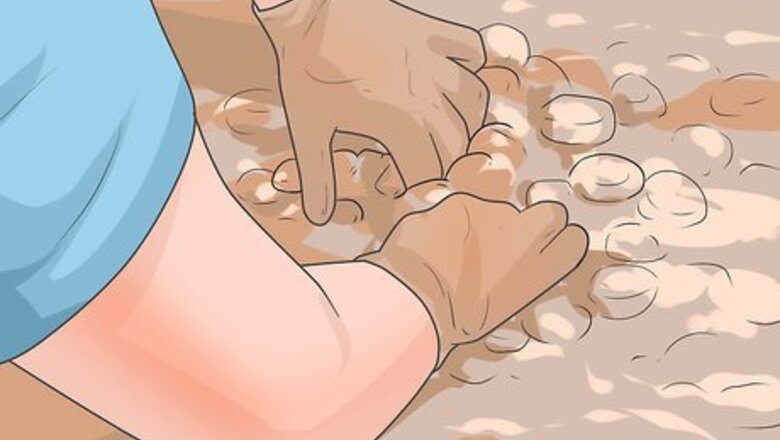
views
Making Your Yard Unattractive to Cats

Cover the soil with uncomfortable material. Cats will not like to dig in rough surfaces. You can cover areas of your yard with a thin layer of safe materials like: Rough-textured mulch Prickly pinecones Pebbles and stones

Place sticks in the soil of your yard. If cats do not have enough room to move around, scratch, and dig, they will seek another area for a litter box. Inserting plant stakes, chopsticks, or similar materials (approximately ten inches in length) every eight inches in the soil will thwart cats. Make sure that the sticks or equivalent materials are inserted to a depth of a few inches into the soil so that they will stay upright.

Offend cats’ sense of smell. Some evidence shows that cats do not like certain smells, and will avoid areas that smell offensive to them. Choose a safe, preferably organic material to sprinkle throughout your yard to discourage cats from using it as their litterbox (reapply weekly, if necessary). Do not use materials such as mothballs or poisons, as these are toxic to cats, dogs, children, etc. Good, non-toxic options include: Citrus rinds (lemon, orange, grapefruit, etc.) Garlic Onion Anise oil Eucalyptus oil Tea leaves A mixture of two parts cayenne pepper, three parts dry mustard, and five parts flour. You can also add some lion dung (you can purchase lion manure). The lion is an alpha predator and is scary to the cat. Cats won't risk visiting in case they bump into him.
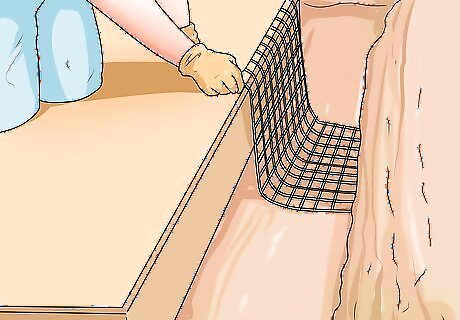
Lay chicken wire above the soil. If you have a particular area that cats are using in your yard, you can deter them by covering that area in standard chicken wire (available from hardware stores). The chicken wire will be soft enough not to hurt the cats, but strong enough to discourage them from digging. As an alternative to chicken wire, you can lay plastic sheeting designed for use in gardens. This method works best if there are only a few particular areas of your yard that cats are using as a litterbox, since it is not convenient to cover large sections of your yard in chicken wire.
Making Cat-Friendly and Cat-Free Zones

Attract cats to a cat garden. If you want to keep cats out of certain areas of your yard, but don’t mind them being in other areas, then try making a cat-friendly area. Cats will be attracted to areas covered by certain plants, and hopefully leave the rest of your yard alone. Create a small plot and grow one or more of the following non-toxic plants in it: Catnip (Nepeta cataria) Catmint (Nepeta mussinii) Cat thyme (Teucrium marum) Valerian (Valeriana officinalis) Spider-plant (Chlorophytum comosum)

Use plants to discourage cats from certain areas. Cats do not like certain plants, and will stay away from them. Try cultivating one or more of these plants in areas of your yard that you do not want cats using as a litter box: Lavender Rue Geranium Absinthe Lemon thyme Thorny roses
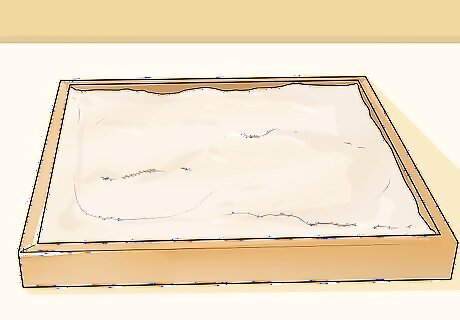
Make a cat sandbox. You can create an alternative outdoor litter box for cats by using a new or old sandbox that is at least as big as a large litter box. Fill it with soft, fine-grained sand (this can be bought by the bag at hardware and home supply stores), which cats find especially attractive. With luck, cats will be drawn to the sandbox and use it much as they would a litterbox. Make sure to scoop the sandbox regularly; if it gets too full, cats may return to using your yard. Keep children away from the cat sandbox, and make sure they understand not to play in it.
Using Barriers and Repellant Techniques
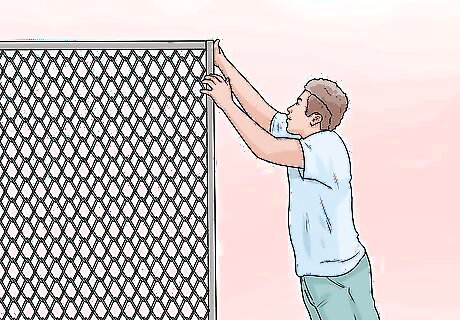
Create a barrier fence. Cats are persistent, and able to squeeze into many places. However, a six-foot high chain-link fence, with two-by-two inch mesh can be effective at keeping cats out of your yard. A two-foot overhang can provide additional protection.
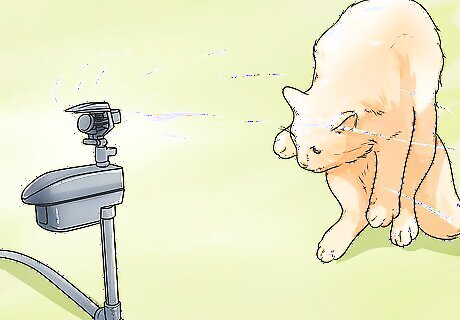
Use a motion-activated sprinkler. Motion-activated sprinklers are available from home supply stores. When a cat walks by, the motion triggers the sprinkler, which sprays a burst of water. Most cats do not like getting wet, so this can often be an effective deterrent. Use motion-activated sprinklers to create a border around your yard or areas of it that you do not want cats to use as a litter box. These sprinklers can be installed either permanently or temporarily, depending on your preference and needs.
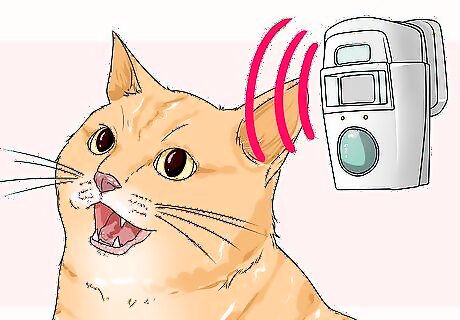
Use an ultrasonic device to deter cats. These emit a high-frequency sound that cats detest, but which humans cannot hear. These devices are motion-activated, so that when a cat walks by, it is startled by the high-frequency sound and should leave the area. Look for ultrasonic devices at a pet supply store, and use them to create a barrier around your yard or sections of it that you do not want cats using as a litter box.
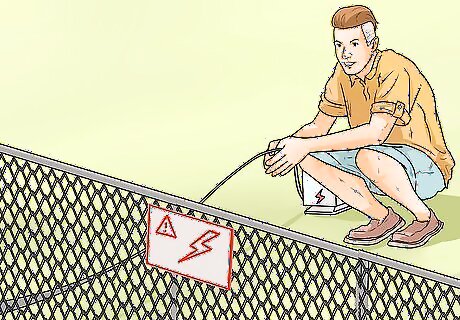
Use a low-voltage wire. An electric fence can effectively keep cats out of your yard, or specific areas. As long as it is low-voltage, it will not harm the cats, only drive them away. The fence can be raised about 4 inches from the ground and still discourage them from using your yard as a litter box. . Look for electric fencing at hardware or home supply stores. Carefully follow all installation and safety instructions. Keep children away from electric fencing.

Spray cats with a hose. If you are watchful of your yard, you may be able to simply spray cats with a water hose whenever they are trying to use your soil as a litter box. Cats can be trained, so if you are persistent, this may eventually be enough to permanently discourage them from using your yard. Be gentle when you are spraying cats with a water hose. Most cats do not like water, so a quick, gentle squirt is usually enough—there is no need for high-powered nozzles, or to thoroughly soak the intruding cats.

Get a dog. Cats will not linger in areas they do not feel are safe from predators. For this reason, a dog that chases cats can effectively keep them from using your yard as a litter box.















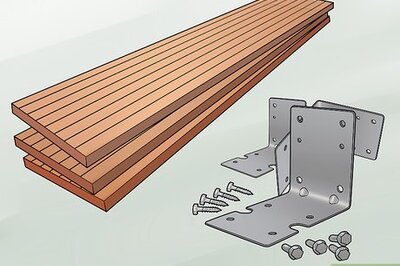
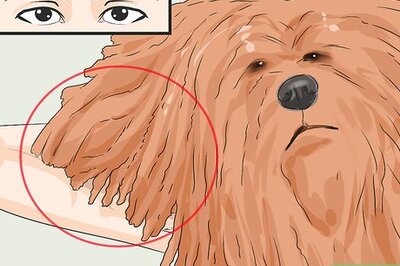



Comments
0 comment